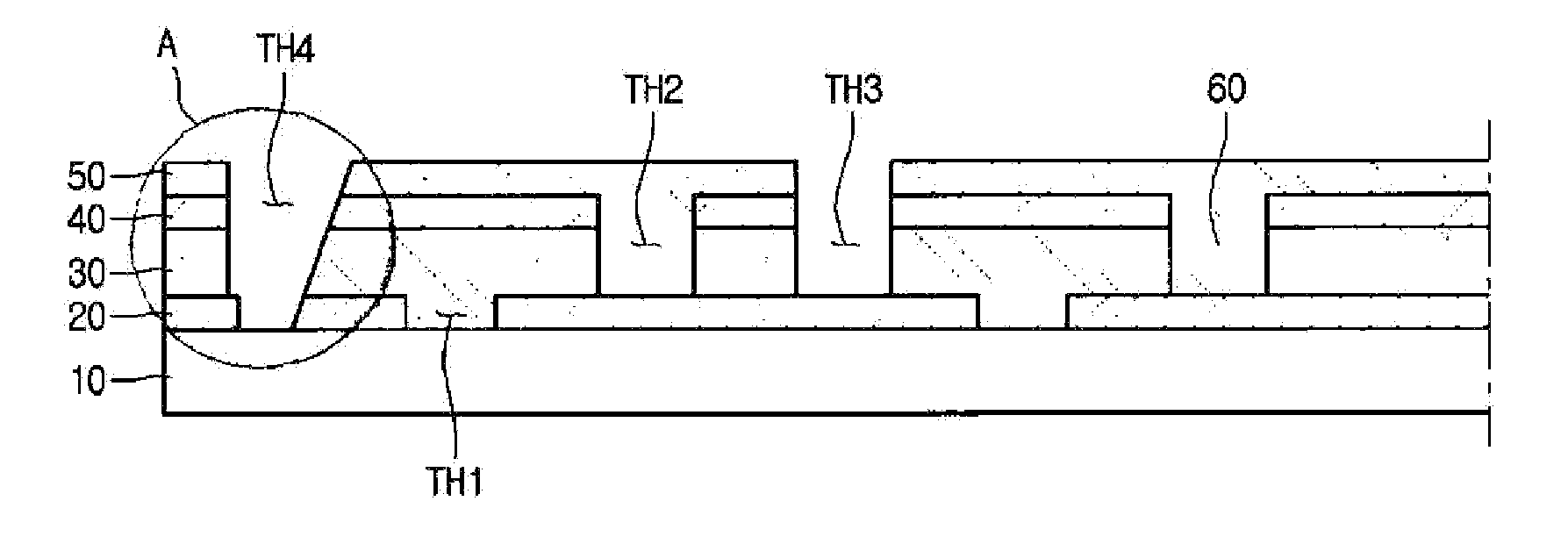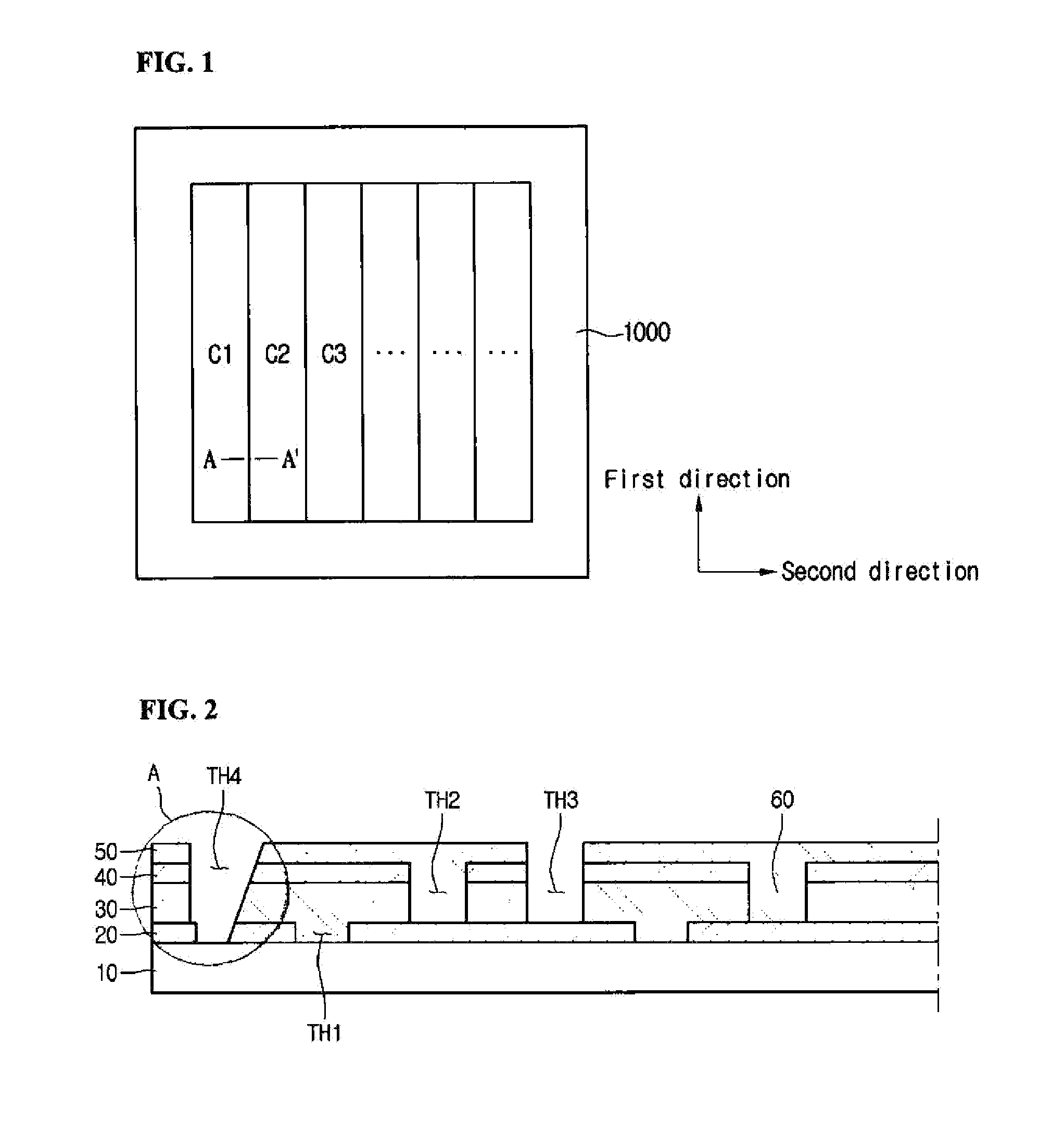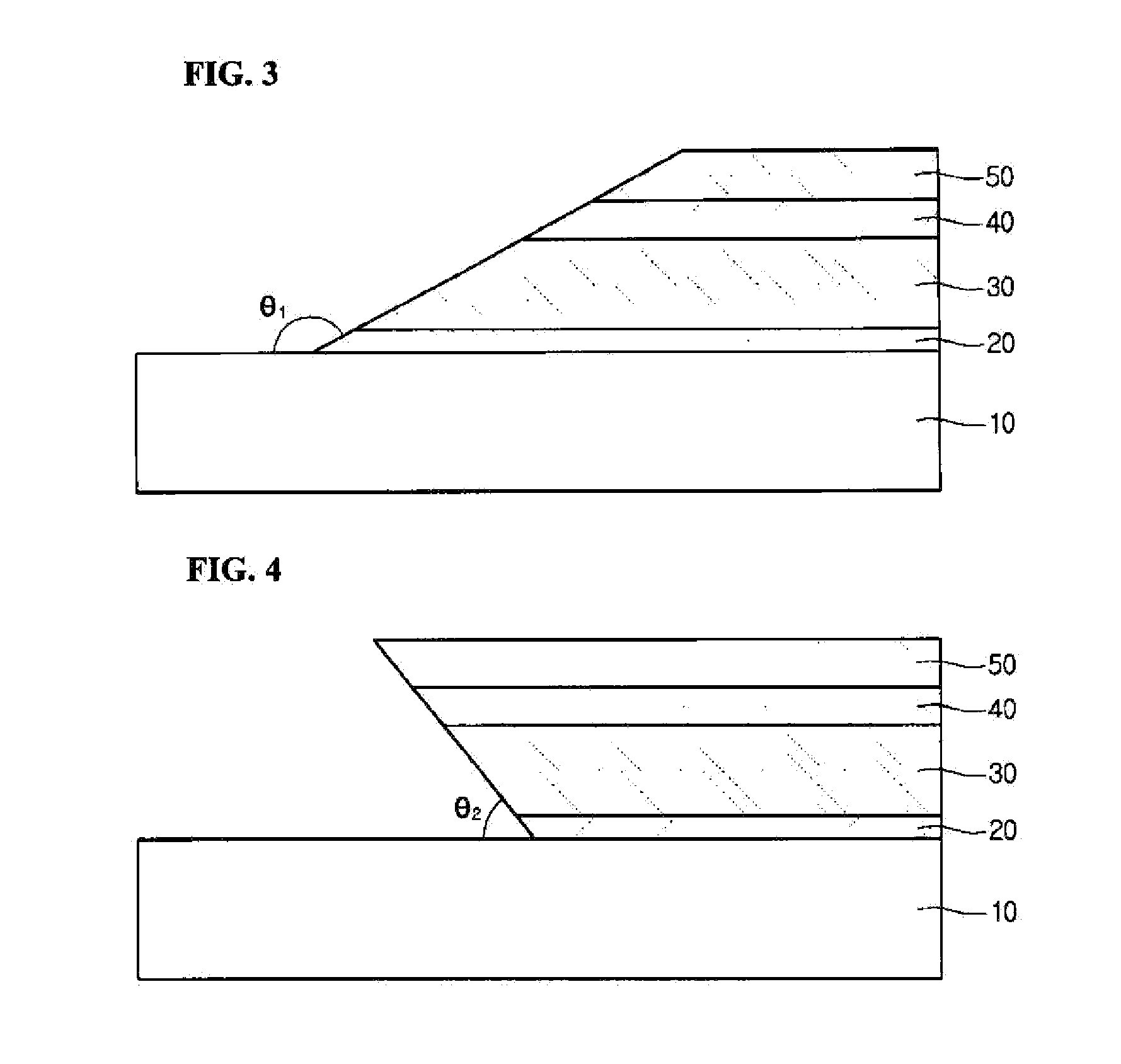Solar cell
a solar cell and cell technology, applied in the field of solar cells, to achieve the effect of reducing process efficiency and increasing process steps
- Summary
- Abstract
- Description
- Claims
- Application Information
AI Technical Summary
Benefits of technology
Problems solved by technology
Method used
Image
Examples
first embodiment
[0030]Referring to FIGS. 1 to 4, the solar cell may include a support substrate 10, a back electrode layer 20, a light absorbing layer 30, a buffer layer 40, a front electrode layer 50 and a plurality of connection parts 60.
[0031]The support substrate 10 has a plate shape, and supports the back electrode layer 20, the light absorbing layer 30, the buffer layer 40, the front electrode layer 50 and the connection parts 60.
[0032]The support substrate 10 may include an insulator. The support substrate 10 may be a glass substrate, a plastic substrate, or a metal substrate. In detail, the support substrate 10 may include soda lime glass. The support substrate 10 may be transparent. The support substrate 10 may be flexible or rigid.
[0033]The back electrode layer 20 may be provided on the support substrate 10. The back electrode layer 20 may be a conductive layer. For example, the back electrode layer 20 may include a metal, such as molybdenum (Mo).
[0034]In addition, the back electrode lay...
second embodiment
[0072]Referring to FIGS. 5 and 6, the solar cell may include a support substrate 100, a back electrode layer 200, a light absorbing layer 300, a buffer layer 400, a front electrode layer 500 and a plurality of connection parts 600.
[0073]In addition, the solar cell according to the second embodiment includes first through holes TH1 formed through the back electrode layer, second through holes TH2 formed through the light absorbing layer, third through holes TH3 formed through the light absorbing layer and the front electrode layer and fourth through holes TH4 formed through the back electrode layer, the light absorbing layer and the front electrode layer.
[0074]The support substrate 100, the back electrode layer 200, the light absorbing layer 300, the buffer layer 400, the front electrode layer 500, the connection parts 600, and the first to third through holes are identical to those of the solar cell according to the first embodiment, so detailed description thereof will be omitted....
PUM
 Login to View More
Login to View More Abstract
Description
Claims
Application Information
 Login to View More
Login to View More - R&D
- Intellectual Property
- Life Sciences
- Materials
- Tech Scout
- Unparalleled Data Quality
- Higher Quality Content
- 60% Fewer Hallucinations
Browse by: Latest US Patents, China's latest patents, Technical Efficacy Thesaurus, Application Domain, Technology Topic, Popular Technical Reports.
© 2025 PatSnap. All rights reserved.Legal|Privacy policy|Modern Slavery Act Transparency Statement|Sitemap|About US| Contact US: help@patsnap.com



